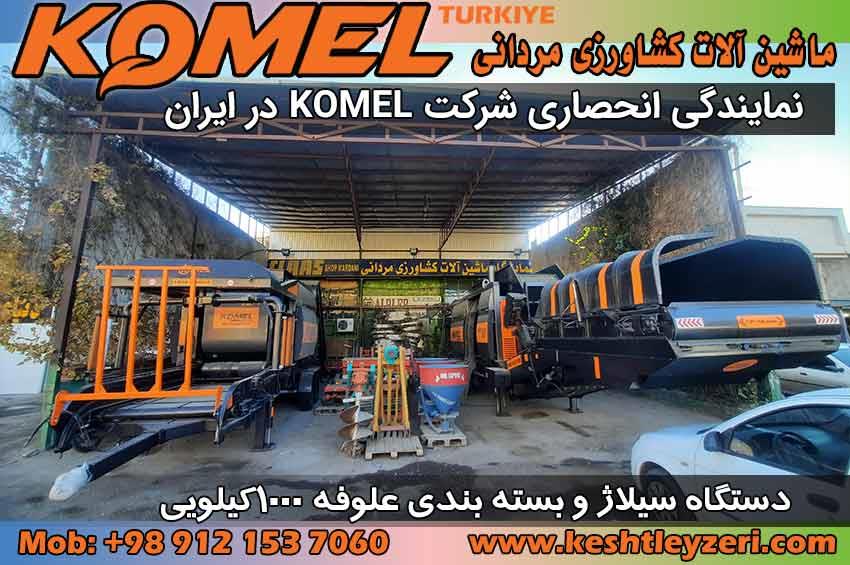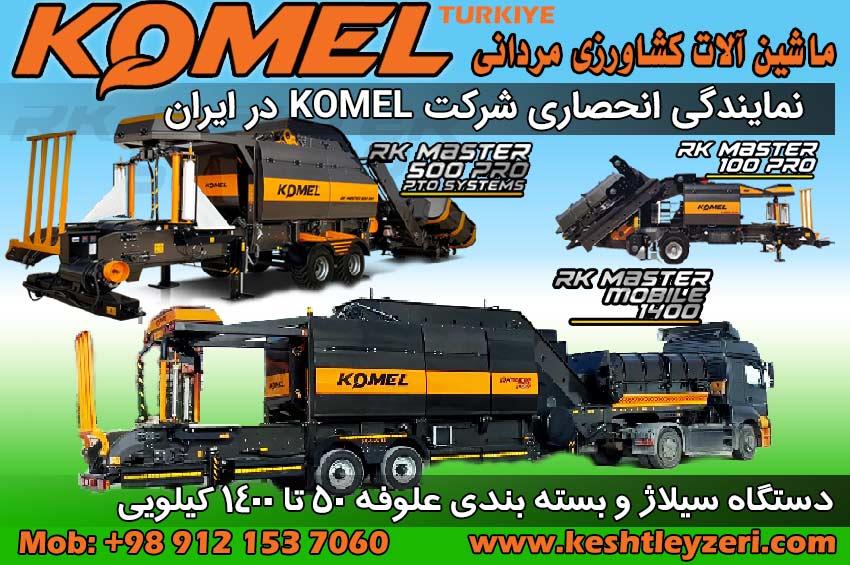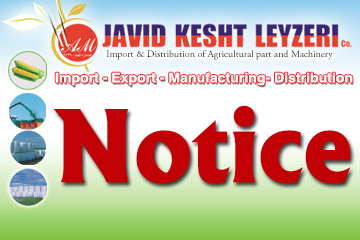- 21 Dec 2025
- 42
Specialized Exhibition for the Sale of Forage Packaging and Corn Silage Machines
KOMEL Forage Wrapping & Silage Machine – Key Features Suitable for wrapping corn silage, wet alfalfa, sugar beet pulp, green barley and wheat Capable of packaging fruit pulp and shredded industrial waste Advanced elastic band compression system for high-density bales Fully automatic stretch wrapping and vacuum sealing High output capacity of 55–70 bales per hour Fully electronic and automatic control system Operates via electric motor, generator, or tractor PTO Heavy-duty industrial structure for long-term operation Ideal for farms, livestock units, silage plants, processing facilities, and recycling centers
- 20 Dec 2025
- 58
Store for forage packaging and silage machines
Packaging of various forage and agricultural products such as corn, alfalfa, barley, and green wheat Packaging of different by-products (beet pulp, apple pomace, tomato pulp) and corn flour Capability to package industrial waste such as shredded plastic, carpets, and rugs
- 06 Dec 2025
- 196
Komel Forage Packaging Machines with 50 to 1500 kg Capacity
Komel forage packaging machines are advanced, fully automated solutions, recognized as reliable and efficient systems for packaging a wide range of forage and materials. These machines are capable of packaging the following materials: Corn silage Fresh alfalfa Sugar beet pulp Triticale Green barley Green wheat Apple pulp Cornmeal Wet corn kernels Tomato pulp Shredded plastic waste Carpet and rug scraps Equipped with an advanced compression system, stretch wrapping units, and fully electronic automatic control, these machines ensure high-quality packaging while preserving the properties of the materials. Komel machines are designed in various bale sizes, from 50 to 1500 kg, to meet the diverse needs of farmers, agricultural processing units, and even recycling centers. This range of capacities provides optimal utilization and high flexibility. With durable construction and efficient performance, these machines enable proper storage, transport
- 06 Dec 2025
- 196
Komel Forage Packaging Machines with 50 to 1500 kg Capacity
Komel forage packaging machines are advanced, fully automated solutions, recognized as reliable and efficient systems for packaging a wide range of forage and materials. These machines are capable of packaging the following materials: Corn silage Fresh alfalfa Sugar beet pulp Triticale Green barley Green wheat Apple pulp Cornmeal Wet corn kernels Tomato pulp Shredded plastic waste Carpet and rug scraps Equipped with an advanced compression system, stretch wrapping units, and fully electronic automatic control, these machines ensure high-quality packaging while preserving the properties of the materials. Komel machines are designed in various bale sizes, from 50 to 1500 kg, to meet the diverse needs of farmers, agricultural processing units, and even recycling centers. This range of capacities provides optimal utilization and high flexibility. With durable construction and efficient performance, these machines enable proper storage, transport
- 06 Dec 2025
- 260
Special Promotion Launched for Komel Fully Automatic Forage Packaging Machines
Javid Kesht Leyzeri Company, the exclusive representative of Komel Turkey, has launched a special promotion for Komel forage packaging machines. These fully automatic, advanced machines can package various types of forage, corn silage, wet alfalfa, pulp materials, and even shredded plastic and carpet waste, offered in capacities ranging from 50 to 1500 kg.
- 19 Oct 2024
- 1004
KOMEL Silage and Fodder Packaging Machines
Special Sale Announcement: KOMEL Silage and Fodder Packaging Machines | ...
- 27 Sep 2024
- 1224
Sale and shipment of KOMEL fodder packaging machine to Qom, Selfchegan customs
Today, Tuesday, 07/03/1403, loading of one ton fodder packing machine, KOMEL brand, destination Iran, Qom province, Salafchegan customs.
- 16 Mar 2024
- 1735
Sale and shipment of 500 kg KOMEL packaging machine to Iran, Shahriar Customs
To inquire about the price of the device and purchase advice, contact the sales manager of Javid Kesht Laser Company, Mr Call Mardani engineer-0912153706 (WhatsApp and ETA). Today, Friday, 12/24/1402, the loading of a 500 kg packing machine of the KOMEL brand to the destination of Iran, Shahriar Customs
- 31 Jan 2024
- 1654
Fully automatic fodder packaging machine of 1000 to 1500 kilos per trailer
The most advanced fully automatic fodder packing machine, 1000 to 1500 kg, trolley cache, with generator. Javid Kesht Company Representation of KOMEL company in Iran.
- 20 Nov 2023
- 2077
KOMEL fodder packaging machine
Javed Kesht Laser Company Representative of Komel company in Iran - producer of all kinds of fodder packing machines from 100 to 1200 kilos









